
Mudskipper
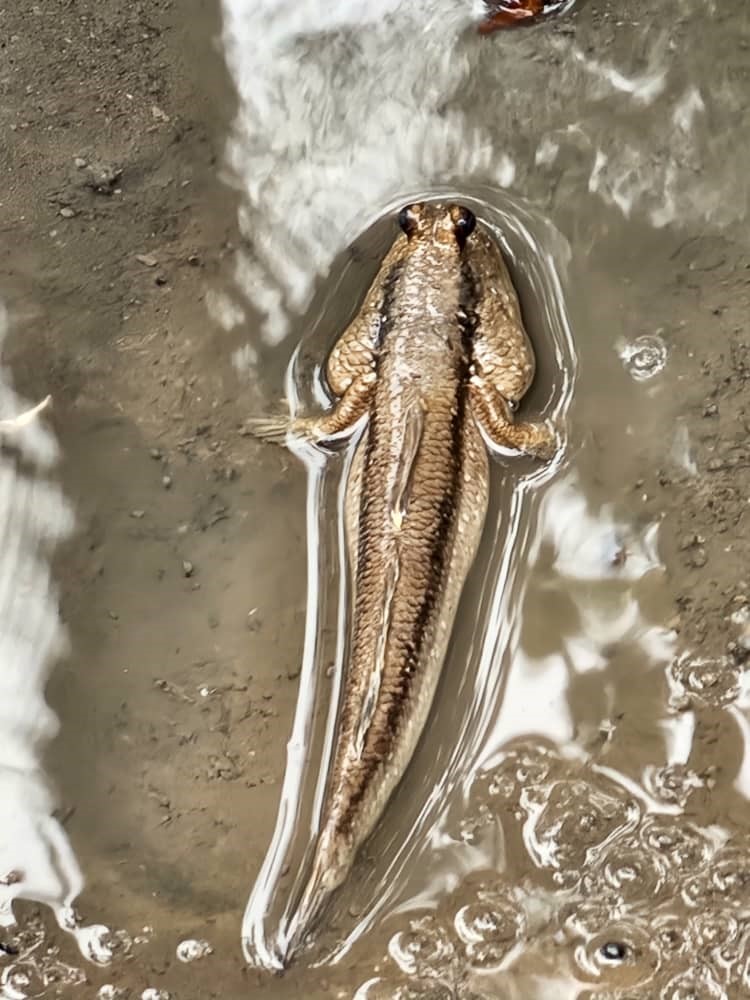
Mudskippers are any of the 23 extant species of amphibious fish from the subfamily Oxudercinae of the goby family Oxudercidae. They are known for their unusual body shapes, preferences for semiaquatic habitats, limited terrestrial locomotion and jumping, and the ability to survive prolonged periods of time both in and out of water. During mating seasons, the males will also develop brightly coloured spots in order to attract females, which can be red, green or blue. Unlike other fish, the mudskipper’s eyes protrude from the top of its flat head. Their most noticeable feature however is their side pectoral fins that are located more forward and under their elongated body. These fins are jointed and function similarly to limbs, which allow the mudskipper to crawl from place to place. Although having the typical body form of any other gobiid fish, these front fins allow the mudskipper to actively “skip” across muddy surfaces and even climb low-hanging tree branches and scrubs. Mudskippers have also been found to be able to leap distances of up to 61 centimetres by laterally flexing and pushing with its tail.
Fiddler crab (blue, red & colourful)
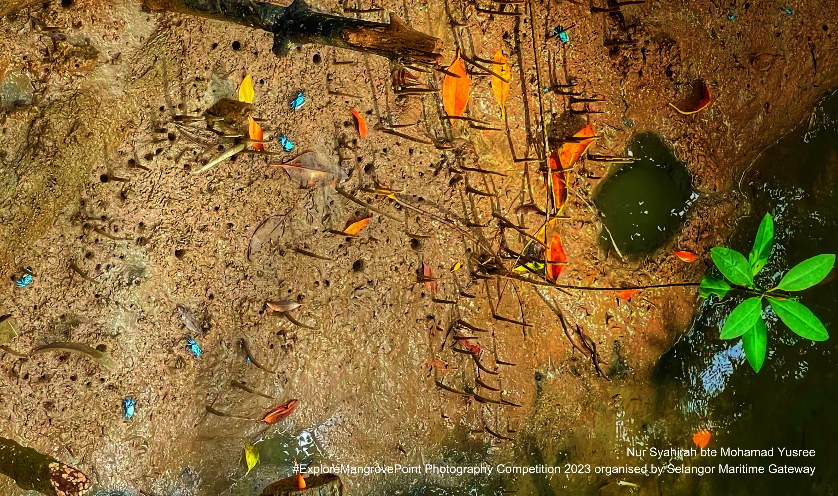
The fiddler crab or calling crab may be any of more than one hundred species of semiterrestrial marine crabs in the family Ocypodidae, well known for their sexually dimorphic claws; the males’ major claw is much larger than the minor claw, while the females’ claws are both the same size. Like all crabs, fiddler crabs shed their shells as they grow. If they have lost legs or claws during their present growth cycle, a new one will be present when they molt. If the large fiddle claw is lost, males will develop one on the same side after their next molt. Fiddler crabs live rather brief lives of no more than two years (up to three years in captivity). Male fiddler crabs use the major claw to perform a waving display as a form of female courtship. Females choose their mate based on claw size and also quality of the waving display.
Mud Crab (Scylla Serrata)
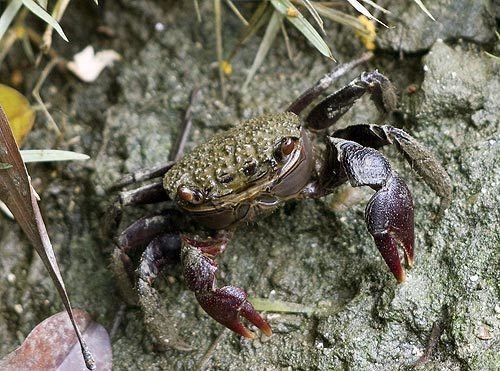
Scylla Serrata often called mud crab or mangrove crab, although both terms are highly ambiguous, and black crab) is an ecologically important species of crab found in the estuaries and mangroves of Africa, Australia, and Asia. In their most common forms, their shell colours vary from a deep, mottled green to very dark brown. These crabs are highly cannibalistic in nature; when crabs undergo molting, other hard-shelled ones sometimes attack the molting crabs and devour them. The females can give birth to a million offspring, which can grow up to 3.5 kg (7.7 lb) in size and have a shell width up to 24 cm (9.4 in) wide.
Mangrove Skink (Emoia Atrocostata)
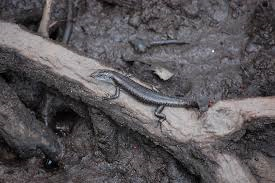
Emoia atrocostata, commonly known as the littoral whiptail-skink, mangrove skink, or littoral skink, is a species of lizard in the family Scincidae. It inhabits mangroves, back-beach vegetation and rocky shorelines. It is semi-aquatic and forages in tidal pools. The Mangrove Skink inhabits mangroves, back-beach vegetation and rocky shorelines: the skinks venture into the intertidal zone at low tide to feed on insects and other invertebrates. The species can be distinguished from the similar many-lined sun skink by the lack of keeled scales on the dorsal surface of the Mangrove Skink. Its colour is grey or brown-grey, flecked with black. There is a faint black band along each side. The throat is often bluish, and the belly greenish or yellow to orange.
Lokan (Polymesoda Expansa)
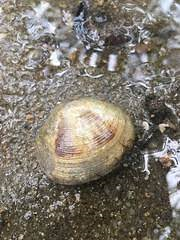
Mangrove clam called Lokan also known as Polymesoda Expansa is found buried in the stiff mud of the landward fringe of mangroves. It is well-adapted to this habitat, being able to tolerate long periods of low tide, and has the ability to resume filter-feeding rapidly when inundated. It is belonged to the family Corbiculidae. The clam itself is a semi-infauna that lives partially below the soft sediment around the roots of mangrove trees.
Monkey

Monkey is a common name that may refer to most mammals of the infraorder Simiiformes, also known as the simians. Traditionally, all animals in the group now known as simians are counted as monkeys except the apes, which constitutes an incomplete paraphyletic grouping; however, in the broader sense based on cladistics, apes (Hominoidea) are also included, making the terms monkeys and simians synonyms in regard to their scope.
Cinereous tit

The cinereous tit (Parus cinereus) is a species of bird in the tit family Paridae. This species is made up of several populations that were earlier treated as subspecies of the great tit (Parus major). These birds are grey backed with white undersides. The great tit in the new sense is distinguishable by the greenish-back and yellowish underside. The distribution of this species extends from parts of West Asia across South Asia and into Southeast Asia.